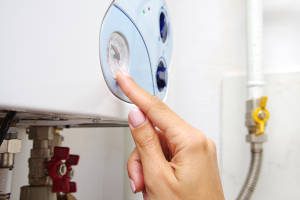 Your boiler may not be the first thing on your mind in the middle of the summer, but now is exactly the right time for an inspection or service. It’s also a good time to learn about boiler pressure – what it should be and what you can do if it’s not quite right – before something happens and you find yourself in the middle of winter with a boiler that isn’t working all that well. So, this month we have taken the opportunity to tell you everything you should know about your boiler pressure.
Your boiler may not be the first thing on your mind in the middle of the summer, but now is exactly the right time for an inspection or service. It’s also a good time to learn about boiler pressure – what it should be and what you can do if it’s not quite right – before something happens and you find yourself in the middle of winter with a boiler that isn’t working all that well. So, this month we have taken the opportunity to tell you everything you should know about your boiler pressure.
The right pressure
While this will vary for each manufacturer the typical boiler pressure is between 1 and 2 bar. Your manufacturer’s manual will tell you the precise pressure for yours but it most likely be within this range. Check the pressure by looking at the pressure gauge dial – the needle should be within the green zone on the dial. If it is in the red zone then your pressure is too high. If you have a digital dial it will give you a numerical LCD reading.
Pressure is too low
If the pressure is too low then you will need to top up your system with water. Again, check your manual to see the precise steps for your boiler, but it will typically involve the following.
- Turn your boiler off and allow it to cool down.
- Once it has cooled, locate the filling loop – a flexible hose usually found under the boiler casing. The hose should be attached to a valve at each end.
- Check that the hose is securely attached to the valves.
- Turn the valve tap handles to open them and allow water to flow into your system – you should be able to hear it.
- Watch the pressure gauge needle begin to move. As soon as it reaches 1.5 bar, close the valves one at a time.
- Turn the boiler back on, pressing the reset button if necessary, and check to see that the pressure holds.
- If appropriate, remove the filling loop hose making sure you catch any water spills and keep it in a safe place in case you need to use it again in future.
Pressure is too high
If the pressure gauge is heading into the red zone, then you will need to relieve some of that pressure. The easiest way to do this is by bleeding your radiators. Follow our guide to bleeding radiators for help on this until your pressure gauge is out of the danger zone.
If after you have done this the pressure is still too high then you’ll need to call in an engineer to take a look. The boiler should be safe to use until then, so long as it isn’t making any loud or unusual noises and is still working properly.
If you’re unsure of how to check, top up or depressurise your boiler then just give our Platinum Plumbers a call. You’ll get hold of us on 020 8855 0361 or you can drop us a line at for a chat or to set up an appointment.

